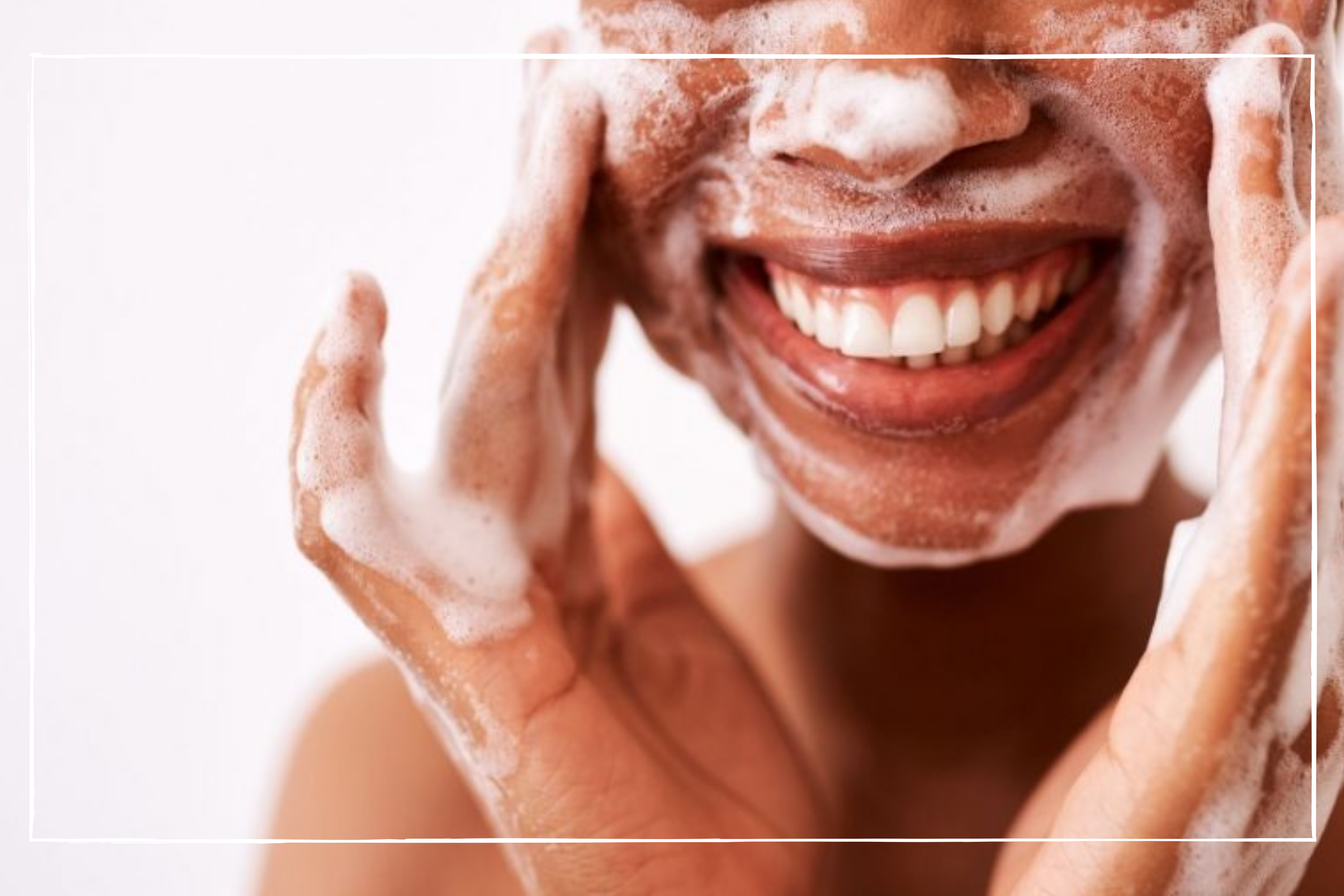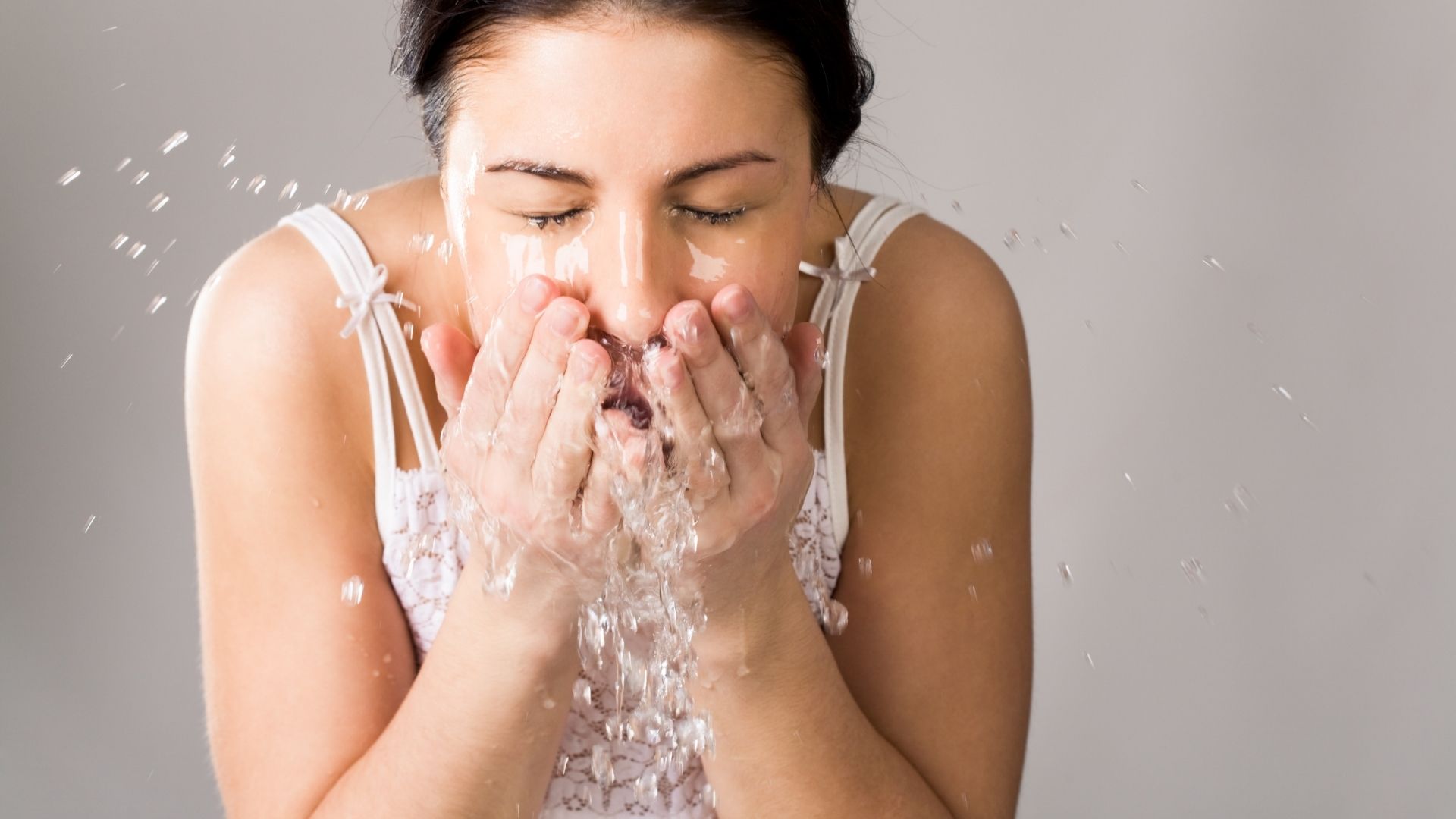How to wash your face properly, according to the experts
Knowing how to wash your face properly can transform your skin. This is the cleansing routine the experts recommend...


Knowing how to wash your face properly can transform your skin. This is the cleansing routine the experts recommend...
It might seem basic but, finding out how to wash your face properly can mean the difference between good and great skin. It might seem as simple as using cleanser with a splash of water but if you’re facing skin issues, a decent cleanse can make all the difference.
Cleansing is such an integral part of any beauty routine because the skin is our largest organ. It’s our barrier to the outside world and can be a signpost of things going on inside the body. Looking after it and removing daily dirt, grime and make-up allow the skin to repair itself and look it's best lessening the appearance of things like dehydration, spots on your face or premature ageing.
According to Dr Ophelia Veraitch, Consultant Dermatologist, cleansing is an absolute must, "Even when not wearing make-up, it’s still important to cleanse properly day and night."
In order to get this important step right, we asked skin experts for their advice on how to wash your face properly and get your best ever skin.
How to wash your face properly
Completely removing your make-up, massaging in your cleanser, using a washcloth and patting your skin dry are vital steps to ensure good skin. But, taking your cleanse a bit further will leave you with great skin.
If you haven't heard the term 'double cleansing' then where have you been hiding? In the morning, a single cleanse with one product is sufficient as you should be going to bed bare-faced. But, at the end of the day - if you wear make-up and SPF - a thorough or “double cleanse” is a great option. This will really rid the pores of product build-up and grime.
Parenting advice, hot topics, best buys and family finance tips delivered straight to your inbox.
But, what is double cleansing? Well, it's exactly as it sounds, cleansing twice.
Skin expert Caroline Hirons explains, "The reason we (facialists) do two cleanses is fairly obvious but in short: we believe it is better to do two quick, gentle cleanses than one long one."
http://www.youtube.com/watch?v=4mrz0jqVXrc
Skin expert and owner of her eponymous skincare brand, Tata Harper agrees, "Double cleansing is critical for skin health but just the one cleanse won’t cut it, especially in the evening. Using only one cleanser at night is like having a shower with all your clothes on. Throughout the day, toxins and pollutants are absorbed into your skin. If not treated properly, will accelerate the signs of ageing."
But there are also other factors to consider to get the most out of your cleanse - skin type, exfoliating and different types of cleanser, to name just a few.
So, to give you a step-by-step breakdown of how to wash your face properly here’s the routine the skin experts advise you to follow.
1. Wash your hands
It might seem trivial but washing your hands before they go near your face is crucial to avoid spreading bacteria. Every day we touch dirty surfaces as well as phones and door handles before we wash and this can cause bacteria to transfer to the skin.
"Always wash your hands first," says Elena Cudworth, Senior Aesthetician and owner of London-based skin clinic Elenique, Doing this will minimise your chances of infections in the form of pimples and spots.
2. First cleanse - Remove your eye make-up
If you've been wearing make-up, start your double cleanse by breaking it down, paying particular attention to eye make-up. Use an eye make-up remover or an oil-based cleansing balm, but avoid using face wipes.
"I would always advise against using face wipes as essentially, they just move dirt and oil around on the face," says Dr Ophelia.
The idea is to take off heavy-duty foundation, eyeliner, and mascara before actually cleaning the skin and a double cleanse, starting with an oil-based cleanser, is the perfect method.
"I always think of step one of double cleansing as your makeup and sunscreen removal step," says Consultant Dermatologist at Skin55 and author of The Skincare Bible, Dr Anjali Mahto.
3. Second cleanse - Use a cleanser
After you’ve successfully broken down your make-up, grab a different cleanser for your second cleanse.
The formula you reach for will be determined by your skin type and skin issues. Here, Elena explains the different types of cleansers and which skin they are most suitable for:
Sensitive skin – "Choose a gentle foaming cleanser or cream-based cleanser with soothing and calming botanicals such as arnica, aloe vera or chamomile." Dry skin – "Use a creamy or milky cleanser with hydrating and nourishing ingredients such as vitamin E, aloe vera, castor oil or sweet almond oil." Combination skin – "As combination skin can be oily and dry at the same time, I would advise using a gentle foaming cleanser or, if skin changes from oily to dry, a gel cleanser in the morning and a cream cleanser in the evening." Oily skin - "Purifying, oil-balancing, foaming gel cleansers are best for oily skin. Cleansers containing purifying, balancing and anti-inflammatory ingredients such as glycolic, salicylic, lactic, mandelic or fruit acids (AHA or BHA) can help to unclog the pores."
4. Exfoliate your skin
Use a chemical or physical exfoliant to buff away dead skin cells and you'll see far more radiant skin underneath. You should aim to exfoliate at least once a week but you can exfoliate more regularly, depending on your skin type.
Physical exfoliation- A physical exfoliant should be a gentle scrub or cleansing powder that's perfect for massaging into damp skin. It literally buffs away dead skin cells to reveal newer ones. Always rinse off a physical exfoliant with your hands to avoid irritation. "Do not use your washcloth with an exfoliating cleanser or scrub as you can over-exfoliate your skin and cause sensitivity," advises Elena.
Chemical exfoliation - A chemical exfoliant is applied like a toner when the skin is dry. It consists of different acids like AHAs, BHAs or PHAs which dissolve dead skin cells over time. Don't overdo chemical exfoliants though, as this can lead to redness or sensitivity. "I think that we are tending to over-exfoliate and people are running into problems with that where they’re getting irritation," explains Dr Anjali. "You probably only want to be exfoliating maybe once or twice a week, particularly if you’re using other actives like retinol."
What about toner? Previously, the purpose of skin toners was to ensure every scrap of make-up was off the face but in more modern times, there’s really no need to ‘tone’.
Double cleansing takes care of make-up removal and cleaning your skin so your chemical exfoliant should take the place of a traditional toning product.
5. Moisturiser/treatments
Finish off your cleanse with either a moisturiser or an overnight skin treatment designed to be left on the skin. This could be retinol, a serum, or one of the best facial oils.
This important step seals in hydration and gets to work on your skin overnight. If you have incredibly oily skin, you may want to skip this step but nearly all dermatologists recommend rehydrating the skin after cleansing.

How to cleanse your face with a washcloth
For a really effective cleanse, using a flannel or washcloth is ideal.
"A washcloth is really useful for wiping the make up off of your face and more effective than just cleansing and rinsing. It also provides some gentle exfoliation," says Dr Ophelia. "I use a clean washcloth each day, and I recommend my patients to do the same."
"To cleanse your face, gently massage your cleanser onto wet skin. Then, take a clean and damp washcloth and wipe the cleanser and make up away, ensuring you don't apply too much pressure to the skin's surface. Gently pat dry with a clean towel."
Remember - always use a clean flannel everyday and put your washcloth into a 60º washing machine cycle to get rid of bacteria and product!
How often should you wash your face?
You should wash your face every day morning and evening, even if you're not wearing makeup.
"The first essential step of your at-home daily skincare routine is cleansing. This should be done t the beginning and end of every day," explains Elena.
Dr Ophelia agrees, "Washing your face in morning and evening is really important. This is to help remove the build-up of dirt and bacteria that can gather throughout the day. These include environmental factors such as pollen, make-up, and dirt from mobile phone contact and face touching, and at night from sweat, dribble, and the pillow. By keeping the skin clean you're reducing the likelihood of bacteria that can develop into acne and outbreaks."
An evening cleanse is especially important as this will prepare your skin for problem-solving treatments while you sleep."Your skin’s natural processes do vary during the 24-hour night-day cycle, so when we talk about beauty sleep your skin is genuinely regenerating and repairing at nighttime," says Dr Anjali. "That’s when your skin cell turnover is also improving."
Can I just wash my face with water?
"Whilst you can just wash your face with water for some people this can leave skin feeling tight and dry. This is particularly the case in many parts of the UK where the water is hard. So I would recommend using a relatively gentle cleanser," suggests Ophelia.
It's worth bearing in mind that washing with only water doesn't effectively remove dirt or make-up. If your skin is really sensitive, try using a calming cleanser to cleanse properly, without any discomfort.
Video of the Week

Emma North is a Senior Beauty Writer who works for digital titles including woman&home, Woman, Woman’s Weekly, Woman’s Own, Chat and GoodtoKnow. Emma’s career in beauty journalism began with internships at publications including Vogue, Elle, The Telegraph and Glamour while she undertook a degree in journalism. She was then taken under the wing of Funmi Fetto, Contributing Beauty Editor at Vogue where Emma assisted with Funmi’s debut beauty book, Palette